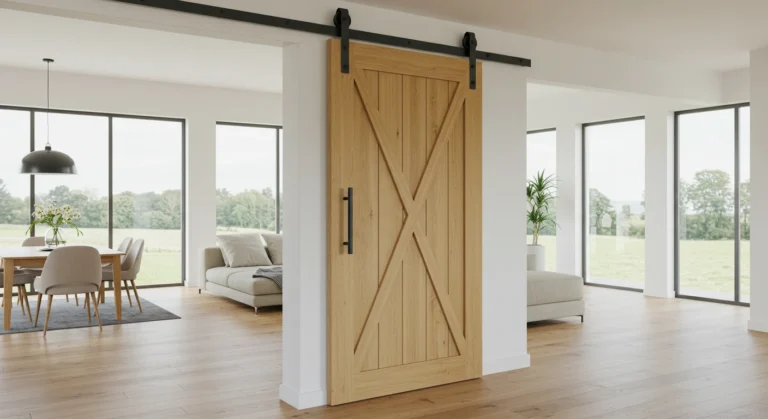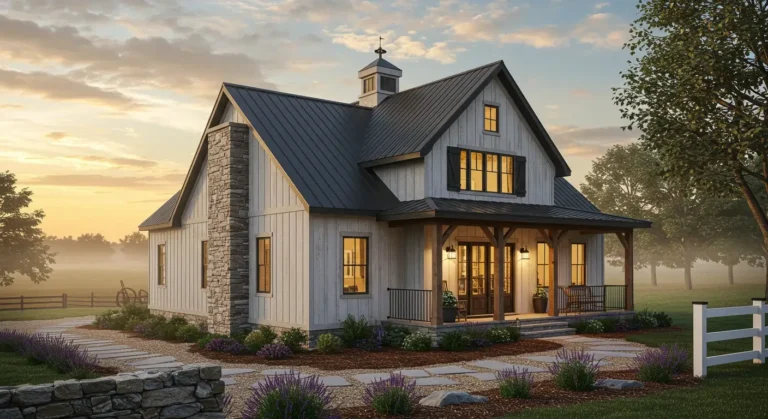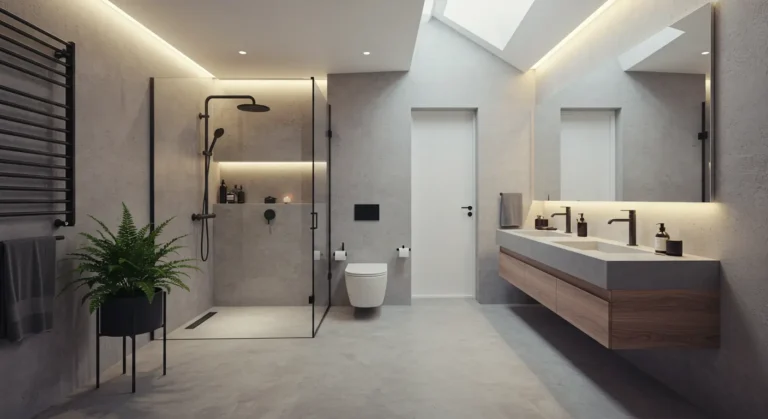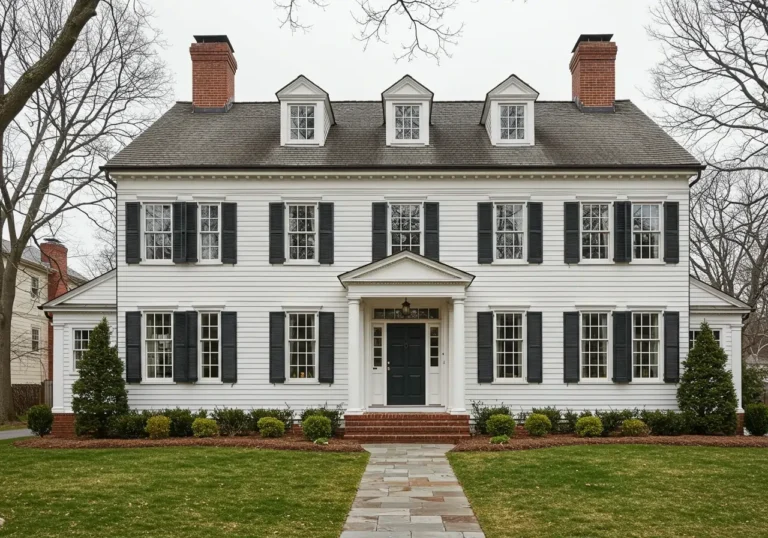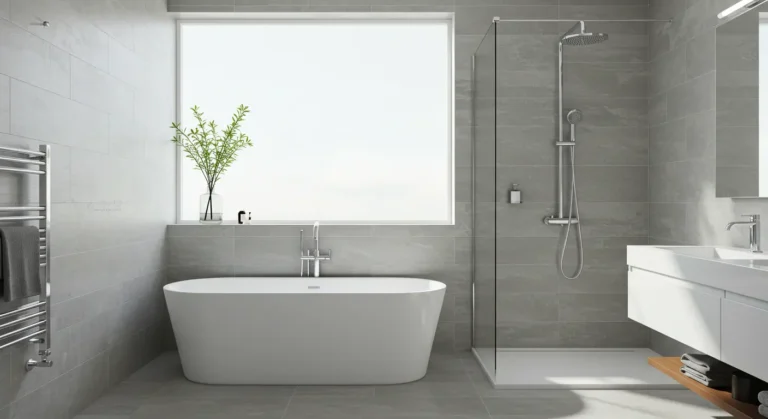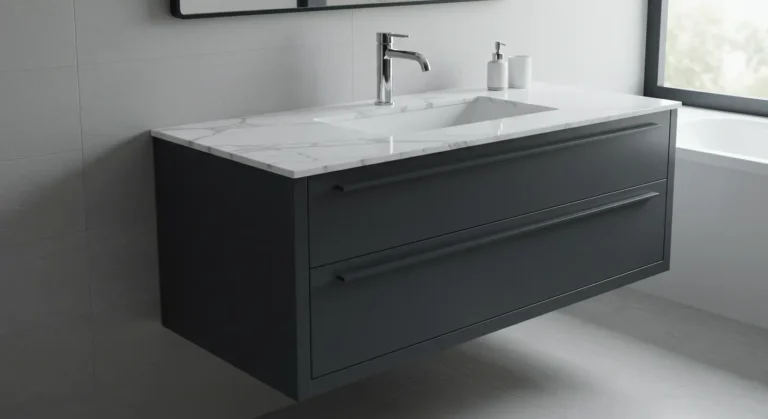Prairie Style Homes: History, Design Elements & Modern Interpretations
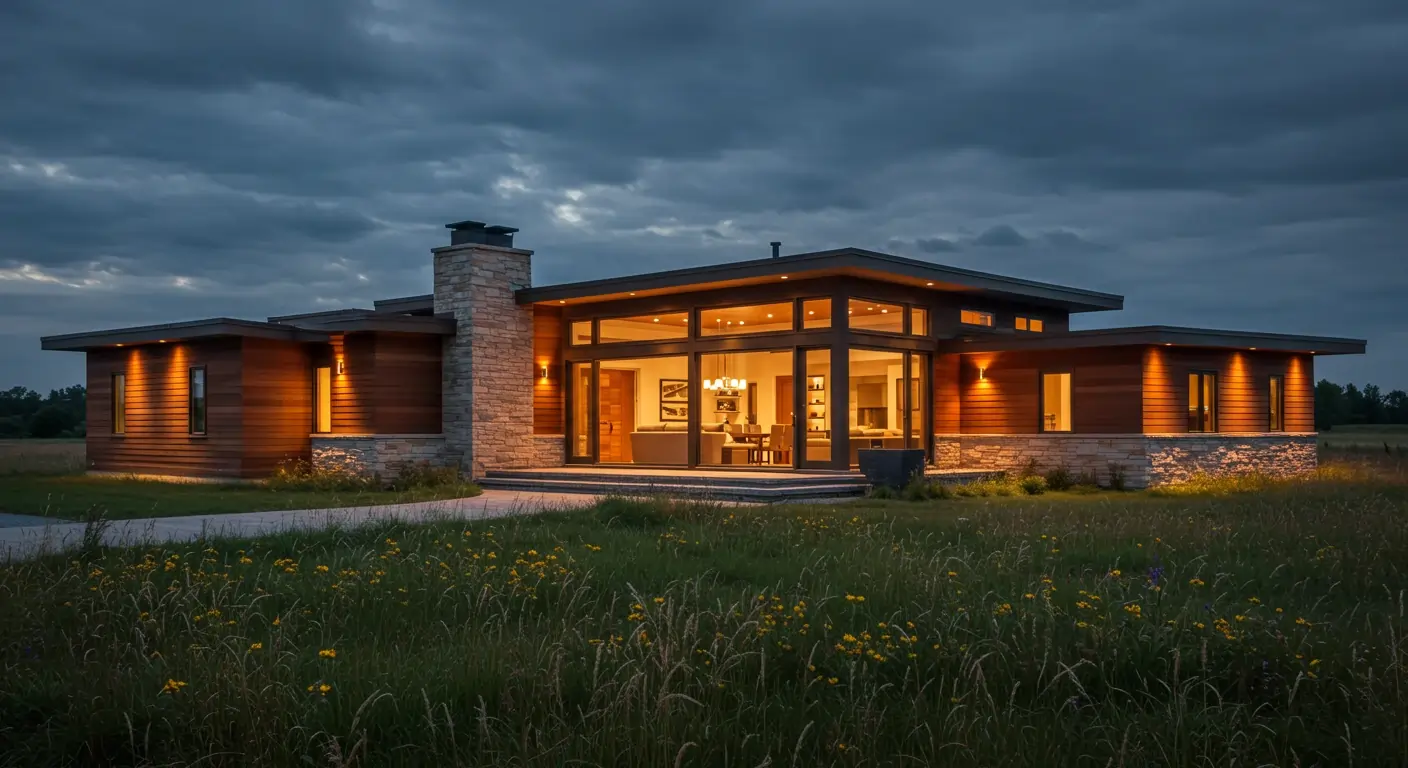
Table of Contents
Prairie Style homes an architectural wonder, adored for the seamless blend of beauty, practicality, and organic form. Beginning in the early 20th century, this style retains and iconic appeal and favorite amongst homeowner and architect alike. If you are a history lover, design fanatic, or are looking to construct or remodel then this guide will look into details, modern adaptations, and suggestions for incorporating this style into your home.
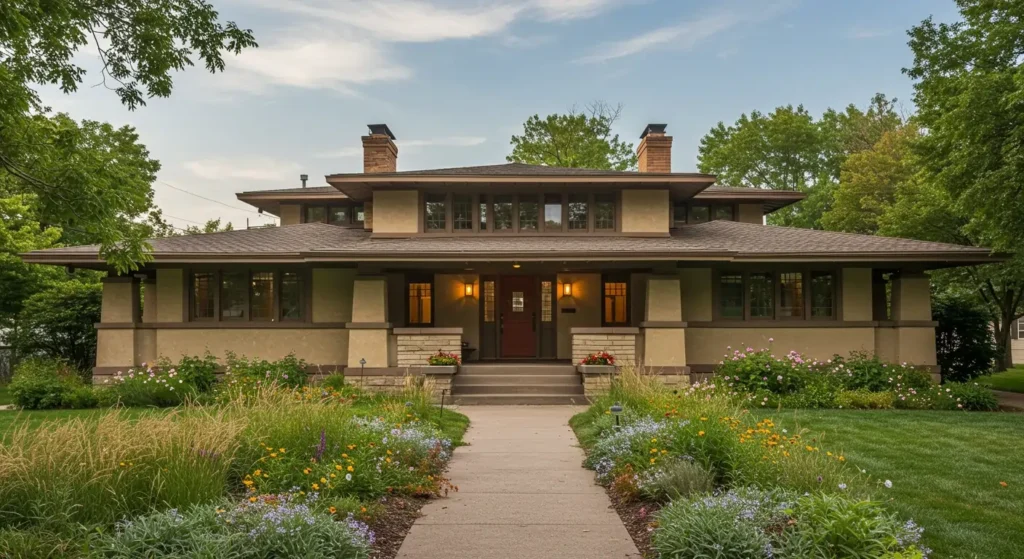
The Great Legacy Of Prairie Style Design
Between the late 1800s and early 1900s, the inflection of the style was a reaction to the industrial urban development. It tried to get rid of the Victorian decorations and instead focused on elegance, the wilderness, and the American Midwest countryside landscapes. The Stone Hinge style served as the technological backbone
The term refers to a group of designers who aimed to develop structures that capture the rough front within America’s heartlands. The Focus on general design philosophy is biased toward curvature architecture, which encourages structural balance and harmony with the surrounding space.
One of the most influential figures in the Prairie School was Frank Lloyd Wright, who is often credited with popularizing the style. Wright’s designs, such as the famous Robie House in Chicago, showcased the defining elements of the Prairie Style: long, low-pitched roofs, strong horizontal lines, and seamless integration with the natural landscape.
Notable Prairie School Architects
While Frank Lloyd Wright is the most celebrated name associated with the Prairie Style, other architects played a significant role in shaping the movement:
- Marion Mahony Griffin: Known for her architectural drawings and contributions to the development of the Prairie Style, Marion Mahony Griffin was one of the first women to gain prominence in the field.
- Walter Burley Griffin: Griffin’s work, including the design of Canberra, Australia, reflects his deep understanding of the Prairie Style and its adaptation to different climates and contexts.
- George W. Maher: Maher’s designs often incorporated geometric patterns and a strong emphasis on horizontal lines, making him a key contributor to the style’s evolution.
For a deeper dive into the history of the Prairie Style, consider checking out Frank Lloyd Wright: The Buildings, a comprehensive coffee table book that features Wright’s iconic designs.
Defining Characteristics of Prairie Style Homes
The Prairie Style is characterized by several distinct architectural and design elements that set it apart from other styles. Below, we’ll explore the key features that define this timeless aesthetic.
Architectural Elements
Prairie Style homes are easily recognizable due to their unique architectural details:
- Low-Pitched Hipped Roofs with Wide Eaves: These roofs provide a sense of shelter and protection, while the wide eaves create shade and emphasize the horizontal lines of the home.
- Strong Horizontal Lines: The long, uninterrupted horizontal lines of Prairie Style homes evoke the vast, open spaces of the prairie. These lines are often accentuated by bands of windows and decorative trim.
- Central Chimney Placement: The central chimney was both a functional and symbolic element, representing the heart of the home and the importance of family and gathering spaces.
- Bands of Windows: Large groups of windows, often arranged in bands, bring in natural light and create a sense of connection to the outdoors.
Interior Design Features
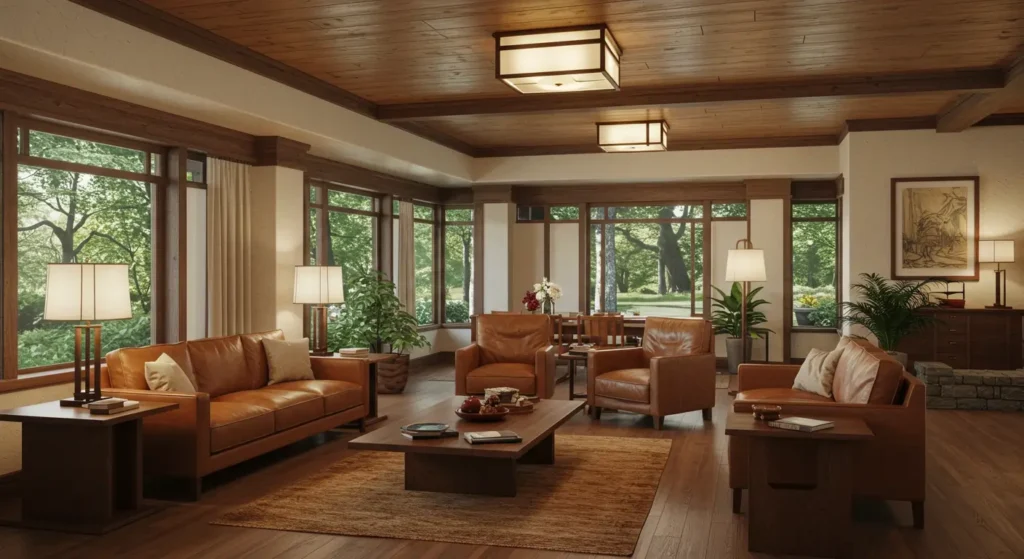
The interior of a Prairie Style home is just as striking as its exterior. Some of the key interior design features include:
- Open Floor Plans: The open floor plan was revolutionary for its time, emphasizing a sense of community and flow between living, dining, and kitchen spaces.
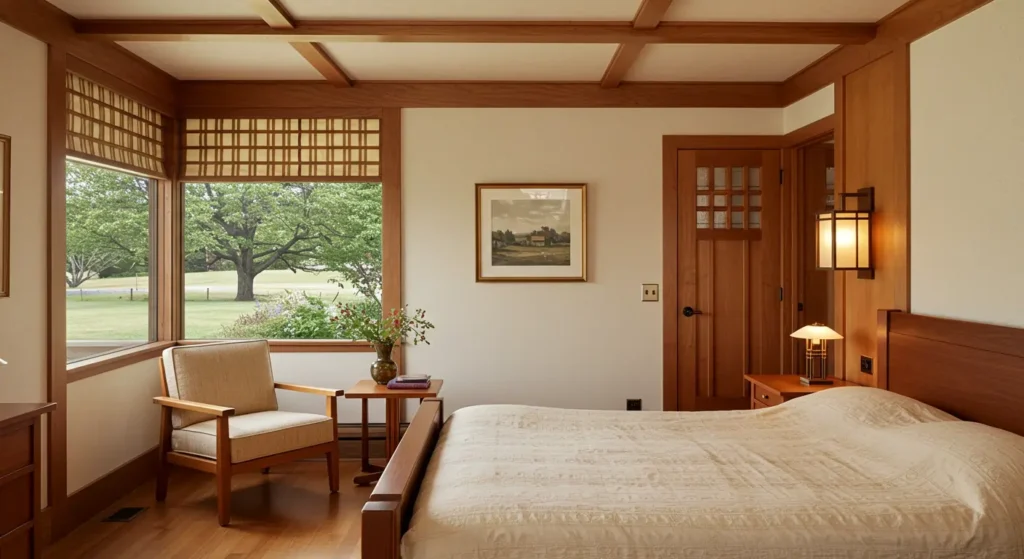
- Integrated Built-In Furniture: Built-in cabinetry, bookcases, and seating areas were designed to create a cohesive and functional space.
- Natural Materials: Wood, stone, and brick were commonly used to bring the warmth and texture of natural materials indoors.
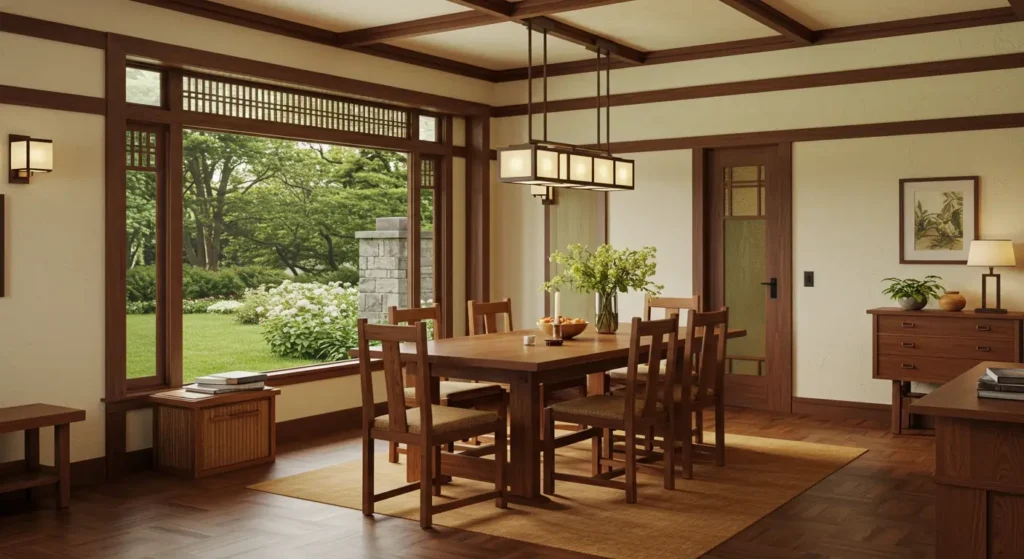
- Emphasis on Craftsmanship: Prairie Style interiors often feature intricate woodwork, stained glass, and other handcrafted details that highlight the importance of artisanal skill.
Landscape Integration
One of the most important aspects of Prairie Style architecture is its connection to the natural landscape. The design of these homes often incorporates:
- Low Terraces and Garden Walls: These features extend the living space outdoors and create a seamless transition between the house and the garden.
- Natural Plantings: Landscaping is simple and understated, with native plants and grasses that complement the surrounding environment.
For a deeper understanding of landscape design principles, visit University of Illinois Landscape Extension.
Prairie Style House Plans & Designs
Whether you’re building a new home or renovating an existing one, Prairie Style house plans offer a unique and timeless solution. Below, we’ll explore some of the key characteristics of Prairie Style house plans and how they can be adapted to modern living.
Floor Plan Characteristics
Prairie Style floor plans are designed to maximize functionality and harmony between indoor and outdoor spaces:
- Cruciform or T-Shaped Layouts: These layouts create a sense of balance and symmetry, with public spaces at the center of the home.
- Centralized Public Spaces: The living areas are typically located at the heart of the home, with private spaces like bedrooms and bathrooms located on the periphery.
- Integration with Outdoor Spaces: Porches, terraces, and other outdoor spaces are designed to extend the living areas and create a connection to nature.
If you’re interested in exploring Prairie Style house plans, consider checking out The Prairie House Plans Collection.
Modern Prairie House Plans
While the Prairie Style is rooted in history, it has evolved to meet the needs of modern living. Contemporary interpretations of the style often include:
- Energy-Efficient Adaptations: Modern materials and techniques have made it possible to build Prairie Style homes that are energy-efficient and sustainable.
- Size Variations: Prairie Style homes can range from modest to expansive, making them suitable for a wide range of budgets and lifestyles.
Building or Renovating in Prairie Style
Building or renovating a Prairie Style home is a rewarding project that requires careful planning and attention to detail. Below, we’ll cover some of the key considerations for bringing this style to life.
Material Selection
The choice of materials is crucial in achieving the authentic look and feel of a Prairie Style home:
- Traditional Materials: Brick, stucco, and wood are the most common materials associated with the Prairie Style. These materials are durable, natural, and offer a timeless aesthetic.
- Modern Alternatives: While traditional materials are preferred, modern alternatives like engineered wood and fiber-cement siding can offer similar looks at a lower cost.
- Sustainability Considerations: If you’re looking to build an eco-friendly home, consider using reclaimed wood, recycled materials, and energy-efficient systems.
Color Palettes
The color palette of a Prairie Style home is typically earthy and subdued, with a focus on natural tones that blend with the surroundings. Some common colors include:
- Earth Tones: Browns, tans, and grays are popular choices for both exterior and interior spaces.
- Historic Color Schemes: For a more authentic look, consider using color schemes that were popular during the early 20th century, such as muted reds, blues, and greens.
- Modern Interpreters: While sticking to natural tones is traditional, modern interpretations of the Prairie Style often incorporate bold accent colors to add personality.
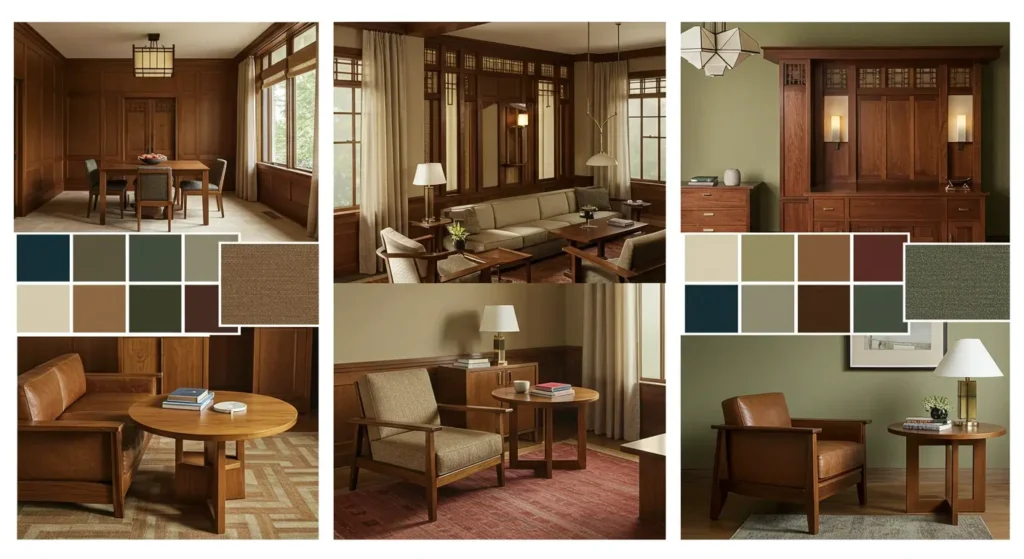
If you’re looking to embrace the Prairie Style color palette, consider checking out Benjamin Moore’s Historical Colors Collection.
Craftsman Details
The craftsmanship of a Prairie Style home is one of its most defining features. Some key details to consider include:
- Woodwork and Trim: Prairie Style homes often feature intricate woodwork, including built-in cabinetry, wainscoting, and decorative trim.
- Stained Glass: Stained glass windows, doors, and panels are a hallmark of the Prairie Style, adding color and light to the space.
- Hardware Selections: Hardware should be simple and understated, with a focus on functionality and durability. Look for pieces that feature clean lines and natural materials.
For a closer look at preservation techniques for historic details, visit This Old House.
Furnishing a Prairie Style Home
Furnishings play a crucial role in bringing the Prairie Style to life. Below, we’ll explore some of the key considerations for furnishing your Prairie Style home.
Furniture Selection
Prairie Style furniture is characterized by simplicity, clean lines, and an emphasis on craftsmanship:
- Arts and Crafts Influence: The Prairie Style was heavily influenced by the Arts and Crafts movement, which emphasized handcrafted furniture and natural materials.
- Built-In versus Freestanding Pieces: Built-in furniture, such as bookcases and window seats, is a hallmark of the Prairie Style. However, freestanding pieces can also be used to add functionality and personality.
- Scale and Proportion: Furniture should be scaled to the space, with an emphasis on balance and harmony.
Textile and Decor Choices
Textiles and decor play a key role in defining the Prairie Style aesthetic:
- Geometric Patterns: Geometric patterns, particularly in stained glass and textiles, are a common motif in Prairie Style design.
- Natural Materials: Use natural materials like wool, linen, and leather for upholstery and drapes.
- Color Coordination: Stick to the earthy, muted color palette of the Prairie Style, but feel free to add pops of color with throw pillows, rugs, and accessories.
Lighting for Prairie Style
Lighting is an essential element in Prairie Style design, with a focus on natural light and warm, inviting fixtures:
- Art Glass Fixtures: Stained glass was a hallmark of the Prairie Style, and is often used in windows, door panels, and lighting fixtures.
- Mission-Style Lamps: Mission-style lamps, with their clean lines and simple geometric patterns, are a natural fit for Prairie Style interiors.
- Recessed Lighting Considerations: While Prairie Style homes often feature warm, ambient lighting, recessed lighting can be used to add task lighting without disrupting the aesthetic.
For a closer look at lighting design principles, visit Architectural Digest.
Modern Interpretations of Prairie Style
While the Prairie Style is deeply rooted in history, it has evolved to meet the needs of modern living. Below, we’ll explore how contemporary architects and homeowners are interpreting the Prairie Style.
Contemporary Prairie Homes
Modern Prairie Style homes often incorporate the same core principles as their historic counterparts, but with a contemporary twist:
- Technology Integration: Modern materials and technologies, such as solar panels and smart home systems, have made it possible to build Prairie Style homes that are both functional and sustainable.
- Sustainability Features: Many modern Prairie Style homes include features like geothermal heating, rainwater harvesting, and energy-efficient appliances.

Prairie Style in Suburban Settings
The Prairie Style is not limited to rural landscapes. In fact, it can be beautifully adapted to suburban settings:
- Adapting to Neighborhood Contexts: While the Prairie Style is often associated with open prairies, it can also be adapted to fit into suburban neighborhoods.
- Scale Considerations: Prairie Style homes can be scaled down or up depending on the size of the lot and the needs of the family.
Regional Variations of Prairie Style
While the Prairie Style originated in the Midwest, it has been interpreted and adapted in various regions around the world. Below, we’ll explore some of the regional variations of the Prairie Style.
Midwestern Prairie Style
The Midwest is the birthplace of the Prairie Style, and it remains the region where the style is most prevalent. Some of the defining features of Midwestern Prairie Style homes include:
- Regional Materials: The use of local materials like brick, stone, and wood reflects the Midwestern emphasis on practicality and durability.
- Notable Examples: Some of the most iconic Prairie Style homes are located in the Midwest, including Frank Lloyd Wright’s Robie House in Chicago and the Westcott House in Springfield, Ohio.
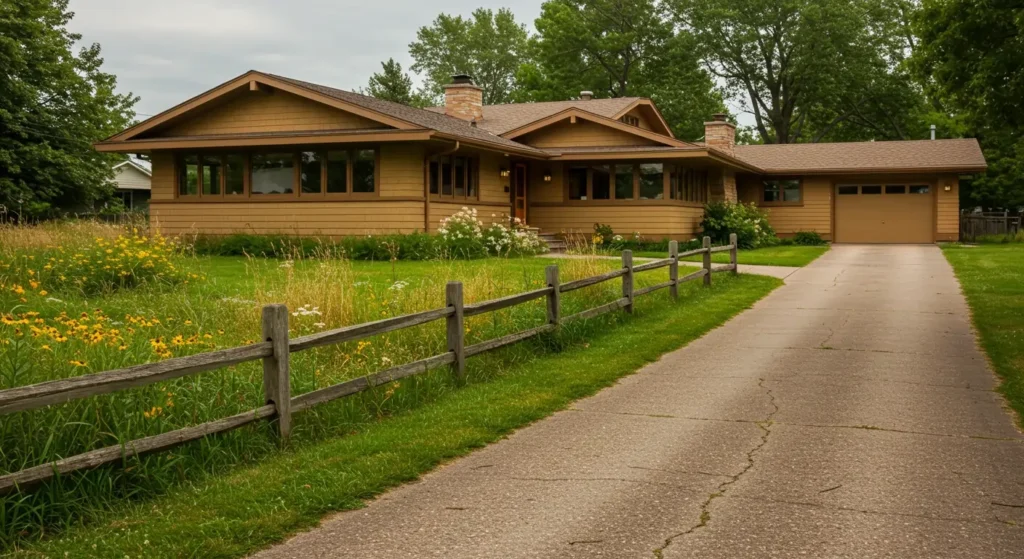
Prairie Style Beyond the Midwest
While the Prairie Style is most commonly associated with the Midwest, it has been adapted in other regions and even internationally:
- Coastal Adaptations: Prairie Style homes in coastal areas often incorporate elements like large windows and light, airy interiors to take advantage of ocean views.
- Desert Interpretations: In desert climates, the Prairie Style has been adapted to include features like thick walls for insulation and large overhangs for shade.
If you’re interested in region-specific architectural guides, consider checking out Regional Architecture and Local Vines.
DIY Projects to Add Prairie Style Elements
If you’re looking to incorporate Prairie Style elements into your home without undergoing a full renovation, there are plenty of DIY projects you can tackle. Below, we’ll explore some fun and manageable projects to get you started.
Window Treatments and Stained Glass
Stained glass is a hallmark of the Prairie Style, and there are several DIY projects you can undertake to incorporate this element into your home:
- DIY Stained Glass Projects: While creating stained glass windows from scratch can be time-consuming, there are simpler projects like stained glass panels and decorative accents.
- Prairie-Style Window Coverings: Simple drapes or shades in natural fabrics can evoke the clean lines and simplicity of the Prairie Style.
Built-In Furniture Projects
Built-in furniture is a defining feature of the Prairie Style, and there are plenty of DIY projects you can tackle to add this element to your home:
- Bookcases and Storage Solutions: Built-in bookcases and storage units are both functional and decorative.
- Window Seats and Benches: Add a cozy touch with built-in window seats and benches.
If you’re looking for woodworking tools and supplies, consider checking out Woodcraft.
Landscape Elements
The connection to the natural landscape is a key element of the Prairie Style, and there are several DIY projects you can undertake to enhance your outdoor space:
- Garden Planters and Trellises: Use natural materials like wood and stone to create planters and trellises that complement your home’s design.
- Pathway Designs: Create meandering pathways using natural materials like brick or gravel to add a touch of the Prairie Style to your garden.
Maintaining and Preserving Prairie Style Homes
Maintaining and preserving a Prairie Style home requires a combination of regular upkeep and a deep understanding of the style’s defining elements. Below, we’ll explore some of the key considerations for keeping your Prairie Style home in top condition.
Common Challenges
Like any home, Prairie Style homes come with their own set of maintenance challenges:
- Roof Maintenance: The low-pitched roofs of Prairie Style homes can be prone to water damage if not properly maintained. Regular inspections and roof repairs are essential.
- Window Preservation: The large bands of windows in Prairie Style homes require regular maintenance to ensure they remain energy-efficient and functional.
For more on preservation, visit National Trust for Historic Preservation.
Renovation Considerations
If you’re considering renovating a Prairie Style home, there are several key factors to keep in mind:
- Balancing Modernization with Preservation: While it’s important to preserve the integrity of the original design, modernizing certain elements like plumbing and electrical systems can make the home more livable.
- Finding Skilled Craftspeople: To ensure that your renovation stays true to the Prairie Style, it’s important to work with skilled craftspeople who understand the style’s defining elements.
Cost Considerations for Prairie Style Homes
Building or renovating a Prairie Style home can be a significant investment, but with careful planning, it’s possible to create a beautiful and functional space within your budget.
Building Costs
The cost of building a Prairie Style home will depend on a variety of factors, including the size of the home, the materials used, and the location. Some key considerations include:
- Premium Features and Their Costs: Features like stained glass, built-in furniture, and high-quality materials can drive up the cost of your home.
- Budget-Friendly Alternatives: While some elements of the Prairie Style are inherently expensive, there are often more affordable alternatives that can achieve a similar look.
For a more detailed look at building costs, check out [Home Building Cost Calculator](https://www DWORD: Understanding unique Urls/WebAPIVariables DO NOT MIRROR THIS PAGE ></Home-Building-Cost-Calculator).
Renovation Investment
Renovating an existing Prairie Style home can also be costly, but it’s often worth the investment if you’re looking to preserve a piece of history:
- Return on Investment Analysis: While the upfront costs of renovation can be high, many Prairie Style homes hold their value well and can offer a strong return on investment.
- Cost-Saving Strategies: Look for ways to save money by repurposing existing materials and focusing on the most impactful changes.
The Prairie Style is a timeless and versatile architectural style that continues to inspire homeowners and architects today. Its emphasis on natural materials, functional design, and connection to the environment makes it a beautiful and practical choice for modern living. Whether you’re building, renovating, or simply looking to incorporate Prairie Style elements into your home, this guide has provided you with the information and resources you need to bring this iconic style to life.
FAQs About Prairie Style Homes
- What Defines a Prairie Style House?
Prairie Style homes are characterized by low-pitched hipped roofs, strong horizontal lines, bands of windows, and a connection to the natural landscape. - Are Prairie Style Homes Expensive to Build?
The cost of building a Prairie Style home depends on the materials and features you choose. While some elements like stained glass and custom woodwork can be expensive, there are more affordable alternatives. - Can Prairie Style Work on a Small Lot?
Yes, Prairie Style homes can be adapted to fit smaller lots. Look for designs with compact footprints and a focus on open floor plans. - How Do You Modernize a Prairie Style Home?
Modernizing a Prairie Style home involves updating systems and materials while preserving the original design. Consider energy-efficient upgrades and contemporary interpretations of traditional features. - What’s the Difference Between Prairie and Craftsman Styles?
While both styles share similarities, the Prairie Style emphasizes horizontal lines and open spaces, while the Craftsman Style focuses on handcrafted details and a more rustic aesthetic.

